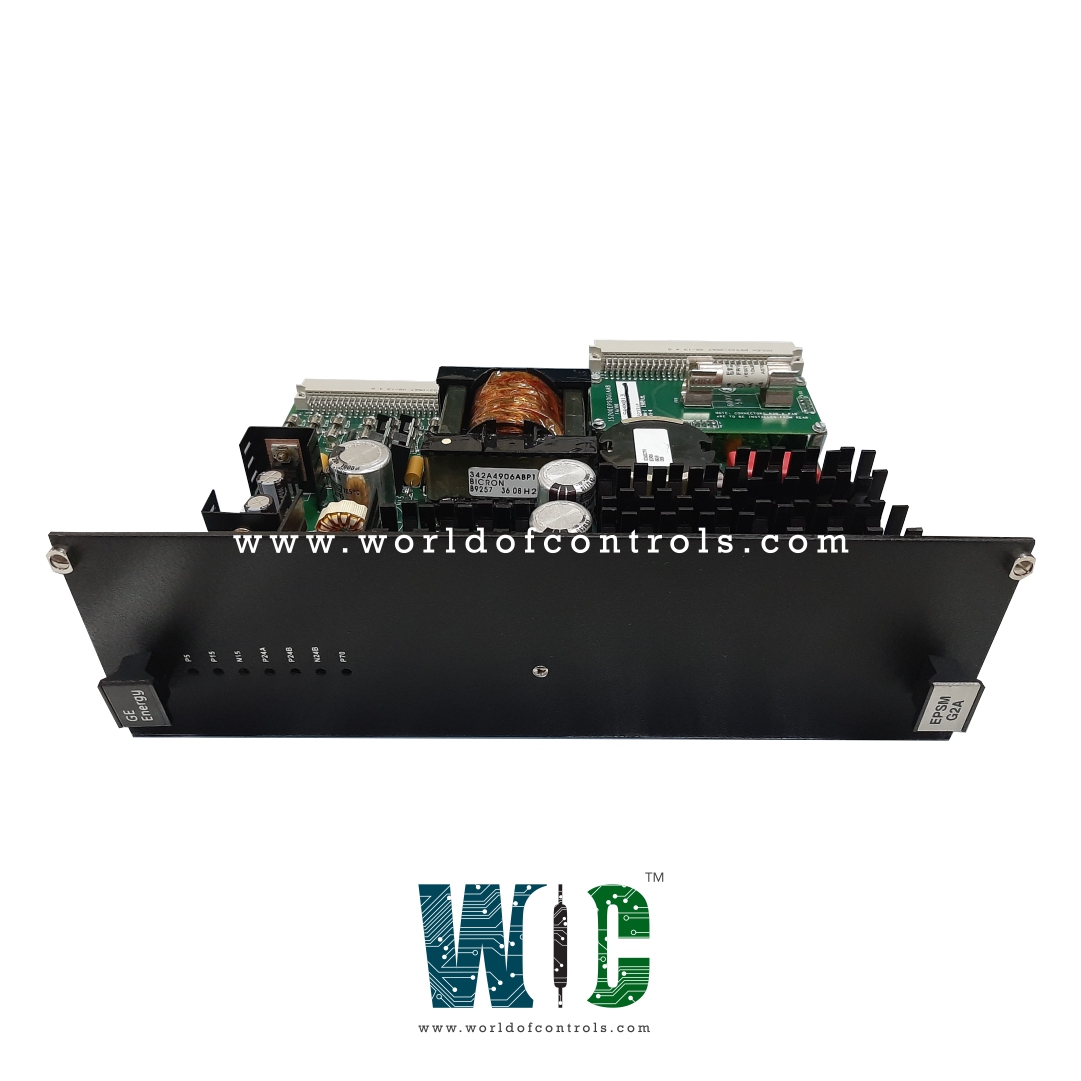
World Of Controls understands the criticality of your requirement and works towards reducing the lead time as much as possible.
IS200EPSMG2AED - Exciter Power Distribution Module is available in stock which ships the same day.
IS200EPSMG2AED - Exciter Power Distribution Module comes in UNUSED as well as REBUILT condition.
To avail our best deals for IS200EPSMG2AED - Exciter Power Distribution Module, contact us and we will get back to you within 24 hours.
Part No.: IS200EPSMG2AED
Manufacturer: General Electric
Country of Manufacture: United States of America (USA)
Technology: Surface-mount
Temperature Operating: -30 to 65oC
Product Type: Exciter Power Distribution Module
Availability: In Stock
Series: EX2100
IS200EPSMG2AED is an Exciter Power Distribution Module developed by GE. It is a part of EX2100 control system. EPSM is an integral component within both the EX2100 Excitation Control System and the EX2100 Regulator Control. In the Regulator Control, specifically, the EPSM Group 2 modules (EPSMG2) are utilized, which incorporate an additional EPSD Exciter Regulator Power Supply Daughter board.
EPSM comprises two primary sections, namely a buck-regulator and a push-pull inverter. The intricate design of these sections plays a vital role in converting and regulating input voltages to meet the diverse power requirements of the control system.
The buck-regulator functions as the initial stage in the power conversion process within the EPSM. Its primary objective is to efficiently lower or "buck" the input voltage to a specific intermediate voltage level, typically around 50 volts DC. This intermediate voltage serves as a pivotal stage in the subsequent power supply steps within the system. The buck-regulator achieves voltage regulation by controlling the duty cycle of a switching element, such as a transistor or a MOSFET. By adjusting the duty cycle, the buck-regulator ensures that the output voltage remains stable and within the desired range despite fluctuations in the input voltage.
Following the buck-regulator, the EPSM incorporates a push-pull inverter to generate multiple output voltages necessary for the proper operation of the control system. This stage involves the conversion of the intermediate 50 volts DC voltage into various output voltages required by different components within the system. The push-pull inverter accomplishes this by utilizing a pair of transistors or other switching devices arranged in a push-pull configuration. This configuration allows for the efficient generation of alternating current (AC) waveforms from the direct current (DC) input. By carefully controlling the switching of these devices, the push-pull inverter ensures the generation of stable and accurate output voltages tailored to the specific requirements of the control system.
The WOC team is always available to help you with your EX2100 requirements. For more information, please contact WOC.
What is IS200EPSMG2AED?
It is an exciter power distribution module developed by GE under the EX2100 series.
What role do the fuses play in the EPSM?
Fuses serve as crucial protective elements. They help regulate current flow, safeguarding the module from overcurrent situations and contributing to the overall stability and reliability of the power supply system.
How many fuses are present on EPSMG1?
It features eight fuses distributed across its voltage outputs. These fuses act as protective measures for each output, ensuring safe and controlled power distribution.
Does EPSMG2 have additional fuses?
Yes, it includes an additional 600 V, 5 A fuse (FU1) on the EPSD, positioned between the dc link input and the buck-regulator. This fuse adds an extra layer of protection in the regulator control system.
What is the purpose of the testpoints?
Testpoints serve as diagnostic tools, facilitating the monitoring and verification of nine voltage outputs. Additionally, they allow testing of PCOM, DCOM, ACOM, and ICOM, aiding in precise assessments of the power supply module's health and performance.
Are there LED indicators on the module?
Yes, it is equipped with LED indicators. These indicators provide visual cues, offering insights into the operational status of the power supply module. They play a key role in quick diagnostics and system monitoring.